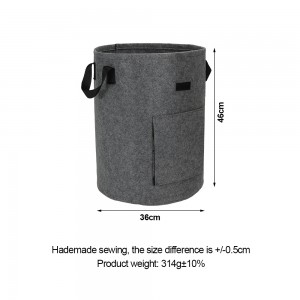Urbanization has led to a significant loss of natural habitats and biodiversity in cities. However, root control bags are proving to be a valuable asset in efforts to reverse this trend and promote urban biodiversity conservation.
These bags offer a convenient way to create micro – habitats within urban landscapes. By filling root control bags with a variety of native plants, city planners and residents can transform barren rooftops, empty lots, and even traffic medians into thriving ecosystems. Native plants attract local pollinators such as bees, butterflies, and birds, which are essential for maintaining a healthy urban ecosystem. In a recent urban greening project, the installation of root control bags filled with native wildflowers on a city rooftop led to a noticeable increase in the number of pollinators in the surrounding area.
Moreover, root control bags can be used to grow trees in urban environments. The root – pruning feature of these bags helps trees develop a strong and stable root system, making them more resilient to the harsh urban conditions, such as compacted soil and limited space. This is crucial for the long – term survival and growth of trees in cities, which in turn provide shade, clean air, and contribute to the overall aesthetic appeal of urban areas.
Community – led initiatives are also leveraging root control bags to engage residents in biodiversity conservation efforts. Local gardening groups organize workshops on how to use root control bags to create small – scale gardens that support local wildlife. Through these activities, urban dwellers are not only learning about the importance of biodiversity but also actively contributing to its preservation in their own neighborhoods.
In essence, root control bags are becoming an important tool in the fight to enhance urban biodiversity and create more sustainable and livable cities.
Post time: May-07-2025

